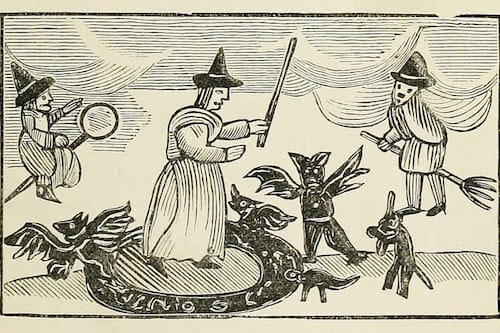The Important Motif of the Witch

At Frieze, Tom Jeffreys draws connections between recent events and publications to ask about the art world's returning interest in the witch. "Newly launched independent publishers Ignota Books have just released Spells, a collection of ‘21st century occult poetry’. In 2019, Penned in the Margins are publishing Witch, a new collection from poet Rebecca Tamás, one of the editors of Spells," writes Jeffreys by way of example. More:
But why now? ‘The visibility of witchcraft today has its roots in long histories of oppression and instability,’ explains artist Hestia Peppe, currently researching for a practice-based PhD in divination as an expanded practice of reading at Sheffield Hallam. ‘Many are experiencing context collapse caused by war, climate change, massive digital noise, spectacle and algorithmic control. If agency and knowledge are withheld or obscured then you have to look for other ways to get them.’
Peppe makes an important distinction between two approaches to magic: ‘Witches’ magic is the wisdom and practice of oppressed peoples; the occult is the organized keeping of secrets by those in power’. Witches’ magic is embodied knowledge; occult magic is closer to black-box military technology. ‘It is naïve to simplify the politics of magic and overlook its use by fascists and white supremacists,’ says Peppe.
In this context, the witch has become an important motif for feminist, environmentalist, and post-colonial reinterpretations, with philosopher Silvia Federici the touchstone thinker. Federici has a new book out this year – Witches, Witch-Hunting, and Women (2018) – but Caliban and the Witch (1998) remains the seminal text...
Read on at Frieze.


